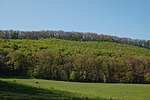Institute of Science and Technology Austria

The Institute of Science and Technology Austria (ISTA) is an international research institute in natural and formal sciences, located in Maria Gugging, Klosterneuburg, 20 km northwest of the Austrian capital of Vienna. It was established and inaugurated by the provincial government of Lower Austria and the federal government of Austria in 2009. ISTA was established on the model of the Israeli Weizmann Institute of Science by its former president Israeli physicist Haim Harari. Like in the Weizmann Institute, scientists are encouraged to pursue their own goals and ideas not restricted by government or economic interest and all research themes are interdisciplinary.As of 2023, ISTA consists of 76 research groups covering the fields of chemistry, physics, astronomy, earth science, mathematics, computer science, data science, biology, and neuroscience. It is expected to grow to about 90 research groups by 2026, and 150 groups by 2036 following commitments from the federal state and Lower Austria. Its graduate school offers an interdisciplinary doctoral program in the life, formal and physical sciences. As of 2022, 320 students were enrolled.
Excerpt from the Wikipedia article Institute of Science and Technology Austria (License: CC BY-SA 3.0, Authors, Images).Institute of Science and Technology Austria
Lenaugasse,
Geographical coordinates (GPS) Address Nearby Places Show on map
Geographical coordinates (GPS)
| Latitude | Longitude |
|---|---|
| N 48.310555555556 ° | E 16.261111111111 ° |
Address
Lenaugasse 34
3400
Lower Austria, Austria
Open on Google Maps










